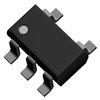-
STMicroelectronics provides a recommended PCB layout in the application note AN5123, which includes guidelines for component placement, routing, and thermal management to ensure optimal performance and minimize noise.
-
The LDS3985M25R requires calibration to compensate for internal offsets and sensitivity variations. STMicroelectronics provides a calibration procedure in the application note AN5123, which involves applying a known magnetic field and adjusting the internal registers to achieve accurate measurements.
-
The LDS3985M25R is specified to operate from -40°C to 125°C, but the accuracy and sensitivity of the device may degrade at extreme temperatures. It's essential to consult the datasheet and application notes for specific temperature-related performance characteristics.
-
The LDS3985M25R is designed to operate in environments with moderate vibration levels. However, extreme vibration can affect the device's accuracy and reliability. STMicroelectronics recommends evaluating the device's performance in the specific vibration environment and considering additional mechanical stabilization or filtering if necessary.
-
The LDS3985M25R communicates through a standard I2C or SPI interface. STMicroelectronics provides example code and interface guidelines in the application notes and software development kits (SDKs) to help engineers integrate the device with their chosen microcontroller or digital system.
 LDS3985M25R datasheet
by STMicroelectronics
LDS3985M25R datasheet
by STMicroelectronics